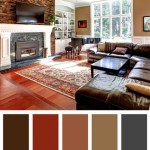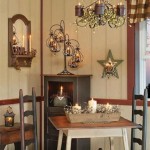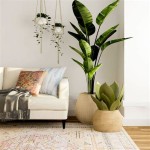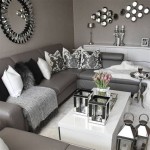How To Decorate A Living Room With Furniture
The living room serves as a central gathering space within a home, often functioning as an area for relaxation, entertainment, and social interaction. Consequently, furnishing and decorating this space effectively requires careful consideration of both aesthetics and functionality. The selection and arrangement of furniture play a critical role in establishing the room's overall atmosphere and utility.
Effective living room decoration begins with a comprehensive understanding of the available space. Measuring the room's dimensions, including length, width, and ceiling height, is essential. These measurements serve as a foundation for determining the appropriate scale and quantity of furniture. A common mistake involves selecting furniture that is disproportionately large or small for the room, leading to a cramped or sparsely furnished appearance. Floor plans, either hand-drawn or created using digital tools, can aid in visualizing furniture arrangements and identifying potential spatial challenges.
Beyond mere dimensions, an analysis of the room's architectural features is crucial. Windows, doorways, fireplaces, and built-in shelving influence furniture placement significantly. The orientation of windows, for instance, dictates the amount of natural light entering the room, which can impact furniture fabric selection and the placement of seating to maximize comfort and minimize glare. Fireplaces often serve as focal points, influencing the arrangement of sofas and chairs to facilitate conversation and a sense of warmth. Understanding these architectural elements allows for a more harmonious integration of furniture within the room's existing structure.
The intended use of the living room is a primary determinant of furniture selection. A living room primarily used for watching television will necessitate a comfortable seating arrangement focused on the television screen. This might include a large sectional sofa, several armchairs, and an entertainment center to house electronic equipment. In contrast, a living room intended for social gatherings might prioritize a more open and conversational arrangement, with multiple seating areas and a coffee table suitable for serving refreshments. A living room serving as a home office might incorporate a desk, comfortable office chair, and adequate storage for work-related materials. Defining the room's primary function ensures that the chosen furniture supports its intended purpose effectively.
Establish a Focal Point
A clearly defined focal point serves as the visual anchor of the living room, drawing the eye and establishing a sense of balance. Common focal points include fireplaces, large windows with attractive views, and statement artwork. The arrangement of furniture should complement and accentuate the focal point. If the focal point is a fireplace, for example, the sofa and chairs can be positioned to face the fireplace, creating a cozy and inviting conversation area. Avoid blocking the focal point with furniture, as this disrupts the visual flow and reduces its impact. A well-defined focal point contributes to a more cohesive and visually appealing living room design.
The choice of a focal point should also align with the room's intended use. In a living room designed for entertainment, the television might serve as a central focal point, surrounded by comfortable seating arranged for optimal viewing. In a room intended for reading and relaxation, a bookcase or a comfortable reading chair positioned near a window might serve as the focal point. The selection of a focal point and its integration into the furniture arrangement is crucial for creating a visually engaging and functional living room.
If the room lacks a natural focal point, one can be created through strategic furniture placement and decor. A large piece of artwork, a striking mirror, or a carefully curated gallery wall can serve as an artificial focal point, drawing the eye and adding visual interest. Furniture can then be arranged around this created focal point to establish a sense of balance and harmony. The key is to select a focal point that reflects the room's style and intended use, ensuring that it complements the overall design aesthetic. Careful consideration of the focal point is pivotal to a well-decorated living room.
Select Furniture Based on Style and Functionality
The selection of furniture should reflect the desired aesthetic style of the living room. Common styles include traditional, modern, contemporary, rustic, and eclectic, each characterized by distinct design elements, materials, and color palettes. Traditional living rooms often feature ornate furniture with rich wood finishes, plush upholstery, and classic patterns. Modern living rooms tend to be more streamlined, with clean lines, minimalist designs, and neutral color schemes. Contemporary living rooms often incorporate a mix of modern and traditional elements, creating a balanced and sophisticated aesthetic. Rustic living rooms emphasize natural materials, such as wood and stone, with a focus on comfort and warmth. Eclectic living rooms embrace a mix of styles and patterns, creating a unique and personalized space.
Beyond aesthetics, the functionality of furniture is paramount. Sofas and chairs should be comfortable and supportive, providing adequate seating for family members and guests. Coffee tables should be appropriately sized for the seating area and offer ample surface space for drinks, books, and other items. Side tables provide convenient surfaces for lamps, remote controls, and personal belongings. Storage solutions, such as bookshelves, cabinets, and media consoles, help to keep the room organized and clutter-free. The selection of furniture should prioritize both comfort and functionality, ensuring that the living room meets the needs of its occupants effectively.
The materials used in furniture construction contribute significantly to both its appearance and durability. Hardwood frames provide structural stability and longevity for sofas and chairs. Upholstery fabrics should be durable, stain-resistant, and comfortable to the touch. Leather upholstery offers a luxurious and sophisticated look, while microfiber fabrics are known for their durability and ease of cleaning. Wood finishes should complement the overall style of the room, with options ranging from light and airy to dark and rich. Metal accents can add a touch of modernity and sophistication. The careful selection of materials ensures that the furniture is both aesthetically pleasing and long-lasting.
Optimize Furniture Arrangement and Flow
The arrangement of furniture significantly impacts the flow of movement within the living room. A well-arranged living room should allow for easy navigation and comfortable interaction. Avoid blocking doorways or creating narrow passageways, as this can hinder movement and make the room feel cramped. Consider the natural traffic patterns within the room and arrange furniture accordingly. Create clear pathways between seating areas, doorways, and other key areas. A thoughtfully planned furniture arrangement enhances the functionality and comfort of the living room.
Conversation areas should be arranged to facilitate social interaction. Sofas and chairs should be positioned to face each other, creating a sense of intimacy and encouraging conversation. A coffee table placed in the center of the conversation area provides a convenient surface for drinks and snacks. Avoid placing seating too far apart, as this can make conversation difficult. The goal is to create a comfortable and inviting space for social gatherings and relaxation. Think about the conversational relationship between furniture pieces.
Scale and proportion are crucial considerations in furniture arrangement. Large pieces of furniture should be balanced with smaller pieces to avoid overwhelming the room. The height of furniture should be considered in relation to the ceiling height. Tall bookshelves can add vertical interest, while low-profile sofas can create a more open and airy feel. The arrangement of furniture should create a sense of visual balance and harmony, contributing to a more pleasing and comfortable living room environment. Ensuring the scales of all furniture pieces agree is the ultimate goal.

Choosing Living Room Furniture Beautiful Homes

All About Living Room Furniture And Decor Designcafe
:strip_icc()/cdn.cliqueinc.com__cache__posts__212361__-2030968-1483470364.700x0c-8571e60cad7b42a981ab29ae10b5c153-497b002f87af4747b2ab38b560e7c0fd.jpg?strip=all)
How To Decorate A Living Room 20 Ideas And Common Mistakes

10 Stunning Small Living Room Ideas To Maximize Space

Star Furniture

25 Living Room Interior Design Ideas Havenly Apartment Classic Furniture Styles

100 Living Room Interior Designs Designcafe

77 Best Living Room Decor Ideas 2025 Unique
Interior Designers Reveal The Mistakes You Re Making In A Living Room

Living Room Furniture Must Haves Top 7 Essentials







